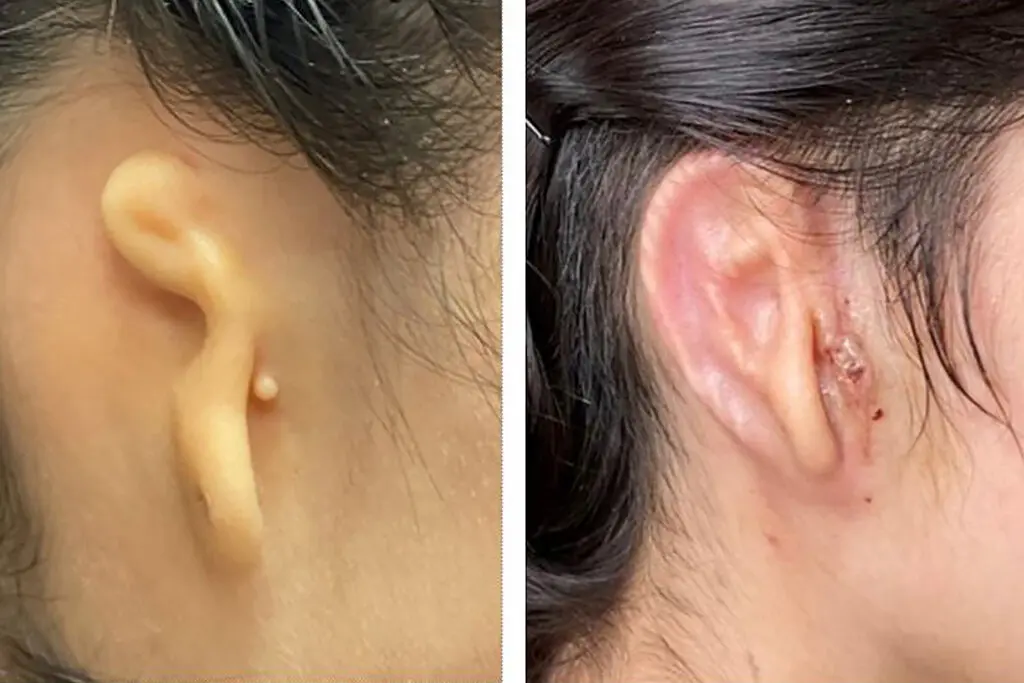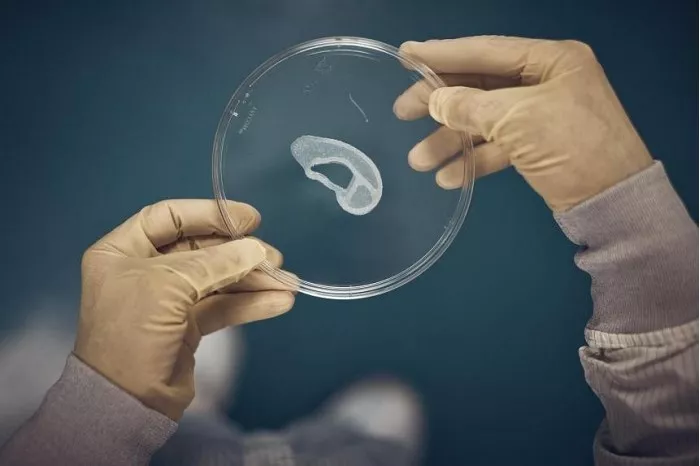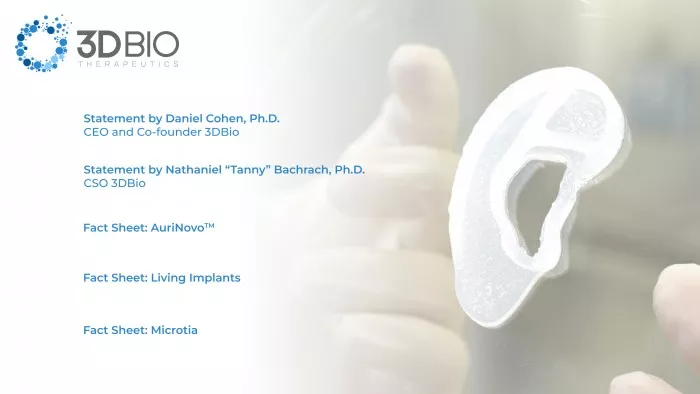3dbio therapeutics, a regenerative medical implant technology company, announced in a press release today that doctors have successfully transplanted a 3D printed ear made of human cells into a woman born with rare ear deformities. This transplantation is part of the first clinical trial of this technique. Its success marks a big step forward in tissue engineering.

"If everything goes according to plan, it will completely change the way organ transplantation is carried out," Arturo Bonilla, an ear reconstruction surgeon who led the team to carry out the operation, told the New York Times.
About 1500 babies born in the United States each year suffer from microtia, a disease in which one or both ears are stunted or completely missing. 3dbio therapeutics is conducting a clinical trial in which 11 participants are testing their aurinovo ears, a personalized tissue implant to replace the missing ears of these patients.

Usually, the ears of patients with microtia are made of rib grafts or synthetic materials. Instead, the procedure involves removing living tissue from the patient's existing ear and removing chondrocytes. The cells were then grown and 3D printed into the shape of the patient's ear. The company told the New York Times that during the life of patients, the ears will constantly regenerate cartilage, and because they are made of their own cells, it is unlikely to have an rejection reaction.
2022 is an important year for the technological progress of organ transplantation. In January this year, doctors performed a pig heart transplant on a patient, although the patient died a few months later. There are also research groups studying 3D printed lungs and 3D printed blood vessels. Executives of 3dbio therapeutics said that in the future, the technology they developed may print other body parts, such as nose and rotator cuff, and eventually print complex organs such as liver and kidney.

"The ear is obviously simpler than the internal organs, and unlike the liver, it is not necessary to maintain human life, so it will be a long way to this potential future." Adam Feinberg, Professor of Biomedical Engineering and materials science and engineering at Carnegie Mellon University, told the New York Times: "but if you have ears, it's more realistic."